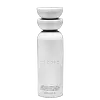What's inside
What's inside
 Key Ingredients
Key Ingredients

 Benefits
Benefits

 Concerns
Concerns

 Ingredients Side-by-side
Ingredients Side-by-side

Water
Skin ConditioningSodium C14-16 Olefin Sulfonate
CleansingMicrocrystalline Cellulose
AbsorbentCocamidopropyl Hydroxysultaine
CleansingSodium Cocoyl Isethionate
CleansingAcrylates Copolymer
Glycerin
HumectantLactobacillus/Salix Purpurea Bark Ferment Extract
AntiseborrhoeicMelaleuca Alternifolia Leaf Oil
AntioxidantOlea Europaea Fruit Oil
MaskingMentha Piperita Oil
MaskingNiacinamide
SmoothingSodium Gluconate
Skin ConditioningLactobacillus
Skin ConditioningCitrus Limon Peel Oil
MaskingRosmarinus Officinalis Leaf Oil
MaskingMontmorillonite
AbsorbentMenthoxypropanediol
MaskingGlycol Distearate
EmollientPolyquaternium-7
Citric Acid
BufferingHydroxyacetophenone
AntioxidantSodium Hydroxide
BufferingEthylhexylglycerin
Skin ConditioningPotassium Sorbate
PreservativePhenoxyethanol
PreservativeTocopherol
AntioxidantLactic Acid
BufferingSodium Benzoate
MaskingTetrasodium EDTA
Limonene
PerfumingWater, Sodium C14-16 Olefin Sulfonate, Microcrystalline Cellulose, Cocamidopropyl Hydroxysultaine, Sodium Cocoyl Isethionate, Acrylates Copolymer, Glycerin, Lactobacillus/Salix Purpurea Bark Ferment Extract, Melaleuca Alternifolia Leaf Oil, Olea Europaea Fruit Oil, Mentha Piperita Oil, Niacinamide, Sodium Gluconate, Lactobacillus, Citrus Limon Peel Oil, Rosmarinus Officinalis Leaf Oil, Montmorillonite, Menthoxypropanediol, Glycol Distearate, Polyquaternium-7, Citric Acid, Hydroxyacetophenone, Sodium Hydroxide, Ethylhexylglycerin, Potassium Sorbate, Phenoxyethanol, Tocopherol, Lactic Acid, Sodium Benzoate, Tetrasodium EDTA, Limonene
 Reviews
Reviews

Alternatives
Ingredients Explained
These ingredients are found in both products.
Ingredients higher up in an ingredient list are typically present in a larger amount.
Citric Acid is an alpha hydroxy acid (AHA) naturally found in citrus fruits like oranges, lemons, and limes.
Like other AHAs, citric acid can exfoliate skin by breaking down the bonds that hold dead skin cells together. This helps reveal smoother and brighter skin underneath.
However, this exfoliating effect only happens at high concentrations (20%) which can be hard to find in cosmetic products.
Due to this, citric acid is usually included in small amounts as a pH adjuster. This helps keep products slightly more acidic and compatible with skin's natural pH.
In skincare formulas, citric acid can:
While it can provide some skin benefits, research shows lactic acid and glycolic acid are generally more effective and less irritating exfoliants.
Most citric acid used in skincare today is made by fermenting sugars (usually from molasses). This synthetic version is identical to the natural citrus form but easier to stabilize and use in formulations.
Read more about some other popular AHA's here:
Learn more about Citric AcidPhenoxyethanol is a preservative that has germicide, antimicrobial, and aromatic properties. Studies show that phenoxyethanol can prevent microbial growth. By itself, it has a scent that is similar to that of a rose.
It's often used in formulations along with Caprylyl Glycol to preserve the shelf life of products.
Water. It's the most common cosmetic ingredient of all. You'll usually see it at the top of ingredient lists, meaning that it makes up the largest part of the product.
So why is it so popular? Water most often acts as a solvent - this means that it helps dissolve other ingredients into the formulation.
You'll also recognize water as that liquid we all need to stay alive. If you see this, drink a glass of water. Stay hydrated!
Learn more about Water